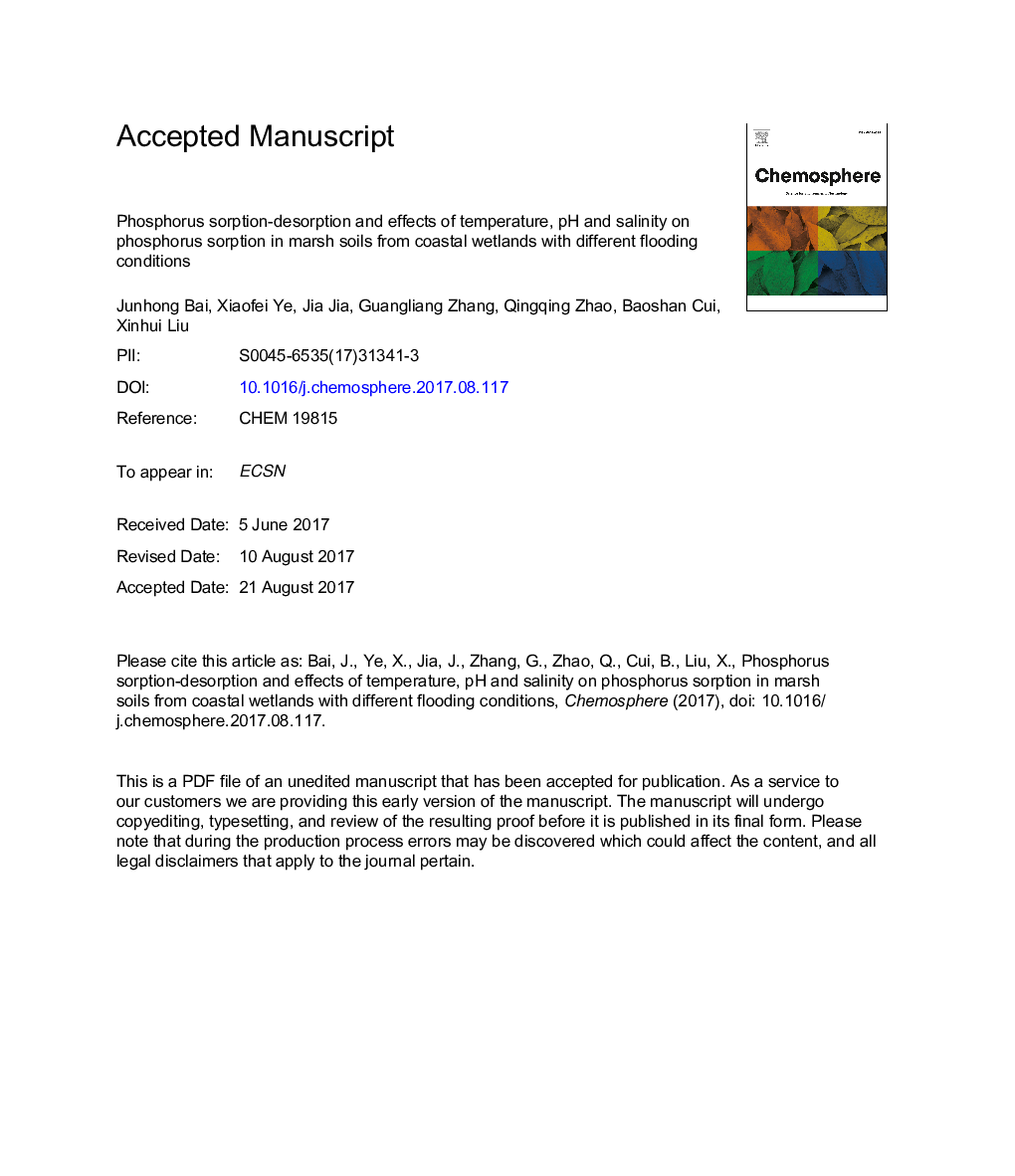| کد مقاله | کد نشریه | سال انتشار | مقاله انگلیسی | نسخه تمام متن |
|---|---|---|---|---|
| 8852952 | 1618783 | 2017 | 50 صفحه PDF | دانلود رایگان |
عنوان انگلیسی مقاله ISI
Phosphorus sorption-desorption and effects of temperature, pH and salinity on phosphorus sorption in marsh soils from coastal wetlands with different flooding conditions
دانلود مقاله + سفارش ترجمه
دانلود مقاله ISI انگلیسی
رایگان برای ایرانیان
کلمات کلیدی
موضوعات مرتبط
علوم زیستی و بیوفناوری
علوم محیط زیست
شیمی زیست محیطی
پیش نمایش صفحه اول مقاله

چکیده انگلیسی
Wetland soils act as a sink or source of phosphorus (P) to the overlaying water due to phosphorus sorption-desorption processes. Litter information is available on sorption and desorption behaviors of phosphorus in coastal wetlands with different flooding conditions. Laboratory experiments were conducted to investigate phosphorus sorption-desorption processes, fractions of adsorbed phosphorus, and the effects of salinity, pH and temperature on phosphorus sorption on soils in tidal-flooding wetlands (TW), freshwater-flooding wetlands (FW) and seasonal-flooding wetlands (SW) in the Yellow River Delta. Our results showed that the freshly adsorbed phosphorus dominantly exists in Occluded-P and Fe/AlP and their percentages increased with increasing phosphorus adsorbed. Phosphorus sorption isotherms could be better described by the modified Langmuir model than by the modified Freundlich model. A binomial equation could be properly used to describe the effects of salinity, pH, and temperature on phosphorus sorption. Phosphorus sorption generally increased with increasing salinity, pH, and temperature at lower ranges, while decreased in excess of some threshold values. The maximum phosphorus sorption capacity (Qmax) was larger for FW soils (256 mg/kg) compared with TW (218 mg/kg) and SW soils (235 mg/kg) (p < 0.05). The percentage of phosphorus desorption (Pdes) in the FW soils (7.5-63.5%) was much lower than those in TW (27.7-124.9%) and SW soils (19.2-108.5%). The initial soil organic matter, pH and the exchangeable Al, Fe and Cd contents were important factors influencing P sorption and desorption. The findings of this study indicate that freshwater restoration can contribute to controlling the eutrophication status of water bodies through increasing P sorption.
ناشر
Database: Elsevier - ScienceDirect (ساینس دایرکت)
Journal: Chemosphere - Volume 188, December 2017, Pages 677-688
Journal: Chemosphere - Volume 188, December 2017, Pages 677-688
نویسندگان
Junhong Bai, Xiaofei Ye, Jia Jia, Guangliang Zhang, Qingqing Zhao, Baoshan Cui, Xinhui Liu,